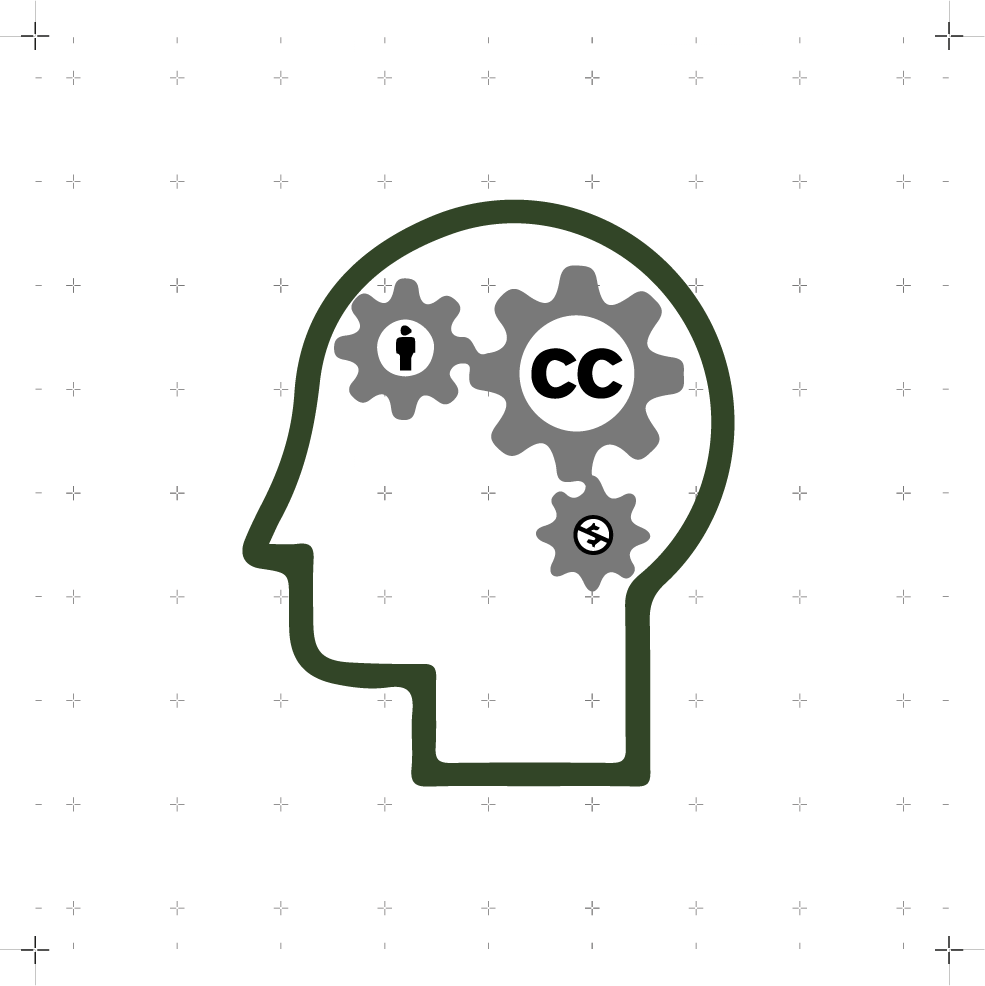Applications and Implications
WEEK 16
Lately my days and weeks are from home to the fab lab, from fab lab to home. I get up early to be able to produce the maximum possible around the days, although I recognize sometimes I end up exhausted. 😓
(20/05/2021 10:26 a.m.). The end is approaching!, and as Adrián says our social life is going to be very limited in the next few days (I am already noticing). 🤣🤣
(19/05/2021 18:28 p.m.).After Neil´s class, from now on we have to focus on knowing what we want to make on our masterpiece project, the functionalities, objectives and criteria. It seems easy, but their are issues and questions that we must answer us before to develop a project (regardless of the discipline or matter it is).
Therefore, before continuing with more parts of the project, I have focused on doing this asignment to focus on the objectives that I would like or can fulfill, before moving forward with the rest of final project parts.
As is the tradition, to be able to move forward and with positivity we need good Rock and Roll, so this week song is Real Life by Greek Fire .
Sit back from the edge of your seat, if you can
Take a minute to remember to breathe, 'cause we're losing our minds
Where anything goes
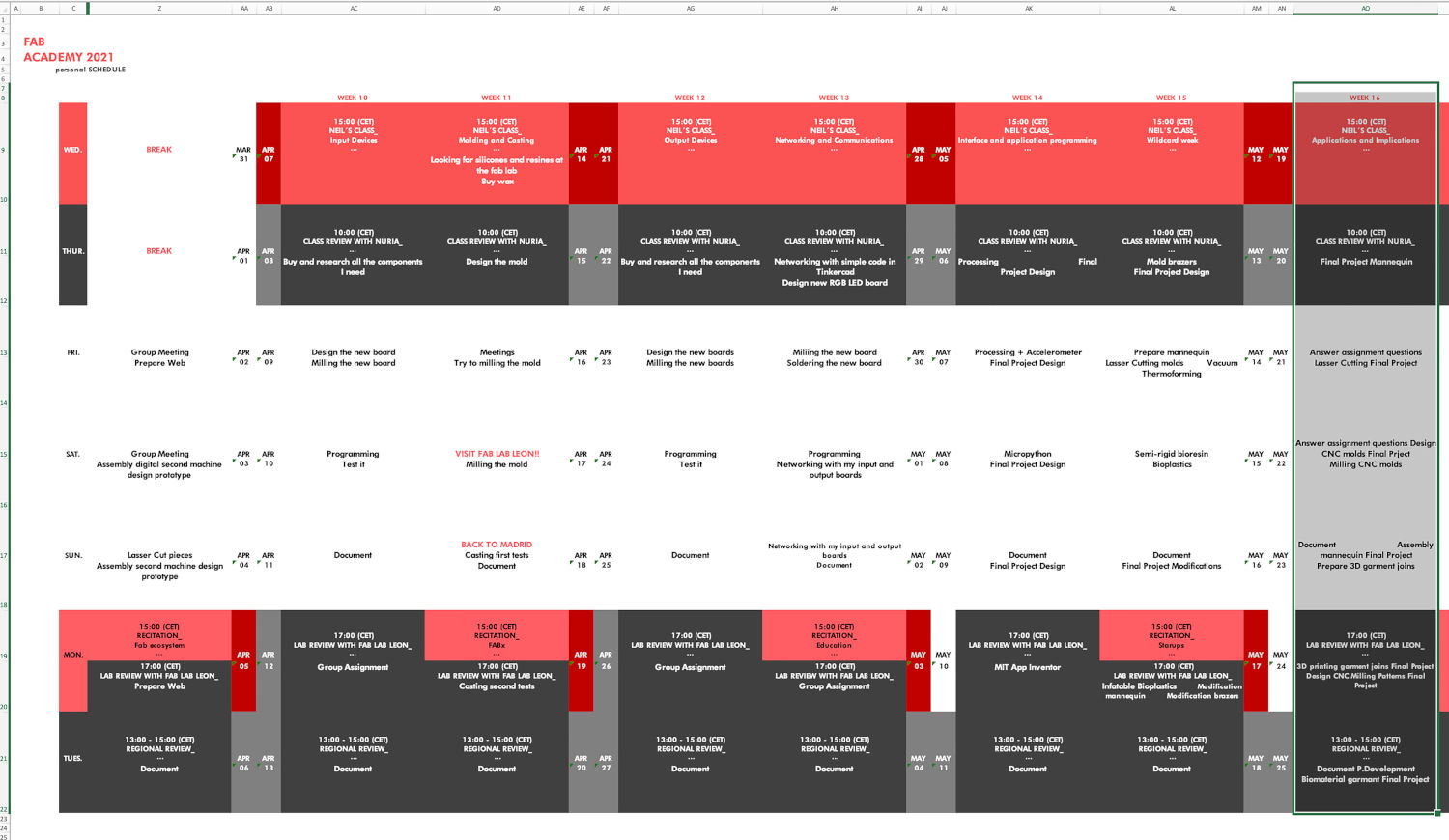
Organizing tasks
In this occasion, we have only one assignment. In this assignment we have to propose a final Project Masterpiece that integrates the range of units covered. The project should incorporate:
- ✓ 2D and 3D design
- ✓ Additive and subtractive fabrication processes
- ✓ Electronics design and production
- ✓ Microcontroller interfacing and programming
- ✓ System integration and packaging
Answer these questions
- ✓ What will it do?
- ✓ Who's done what beforehand?
- ✓ What will you design?
- ✓ What materials and components will be used?
- ✓ Where will come from?
- ✓ How much will they cost?
- ✓ What parts and systems will be made?
- ✓ What processes will be used?
- ✓ What questions need to be answered?
- ✓ How will it be evaluated?
What will it do?
B.R.E.A.T.H.E is an experimental reserach to create wearables focused on correcting body postures in stretching and / or meditation exercises. The idea is to use different digital fabrication tools to explore the ludic and practical limits between wearable technology and the new biomaterial proposals around the body.
At the beginning, digital fabrication focuses on an individual case, which, depending on the achievements obtained in the different spirals, can be systematized and modular: its design (depending on the proportions of the different users); and applied programmed electronics (depending on the physical needs of each user).
Being a project that can have multiple variables and implications, I am going to focus the final Project on the first spiral. The idea consists on making a first prototype of a biofabricated sleeve that corrects a secuences of basic stretching postures with one arm.
This project aims to explore the viability of biotechnological garments to teach and help amateur users or those with little physical activity what are the optimal body postures to do to relieve physical pain and improve their emotional state.
The intention to make a biomaterials prototype is:
- Show it is possible to fabricate your own clothes with ingredients or elements that are part of our day to day. And,
- Try to minimize the environmental impact of the garments, creating textiles (from zero) that can be reused, as compost or are easily biodegradable when their useful life ends.
Who's done what beforehand?
At Fab Academy there are some projects on wearables and biomaterials separately, but there is no current reference on a project that combines the two principal items of my project.
For the part of wearable electronics, I have taken as a reference Victoria Peredo's project, whose project focuses on correcting the back posture to avoid future physical pain.
There are other external projects related to smart textiles and clothing that I have taken from Pauline Van Dongen such as Issho and Fysiopal. I have taken these two projects as a reference to understand well the implication of wearables on practical targets around the body.
Regarding projects related to biomaterials garments, I have taken as a reference some works by Clara Davis such as Calgina Bodysuit and Biofilter Top, a project done in collaboration with Anastasia Pistofidou.
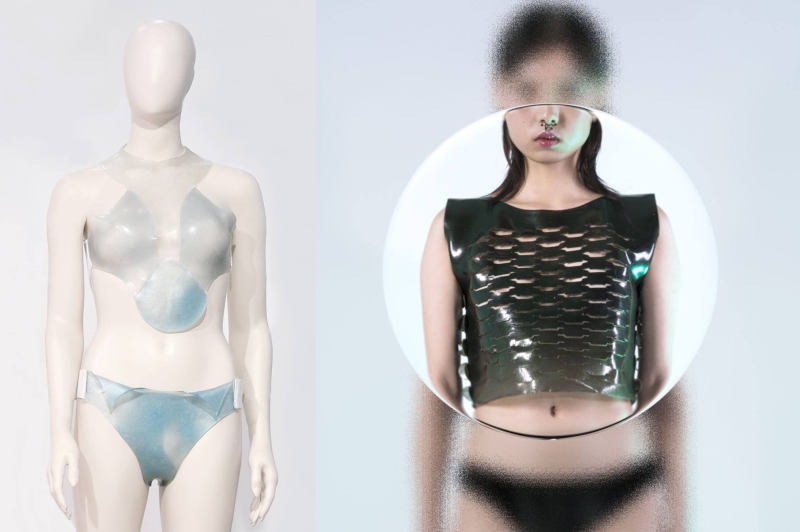
On the other hand, this project is the evolution of Níitû project, which I did last year as my final project of the Master of Fashion Futures. Here I was able to demonstrate it is possible to carry out experimental suits with biomaterials, except in this project I could not implement the technology due to time constraints.
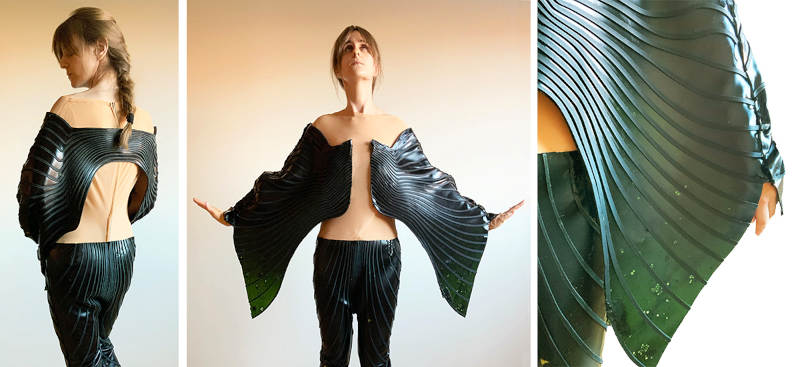
What will you design?
My idea is to design a prototype sleeve and "harness" made with biomaterials from auxiliary molds created with digital fabrication tools in the CNC machine and vacuum thermoforming machine. It will be designed and manufactured:
- All the electronic boards that will integrate.
- Some garment links that I will 3D print.
- As well as, other auxiliary elements such as the mannequin that we will use to mold some of the biomaterials.
What materials and components will be used?
For the mannequin (auxiliary suppport):
- 5 mm DM Wood Board
- 18 mm round section wood profile
- White glue
To create the biomaterial garment I will need:
- 10mm Foamed PVC Board
- Extruded Copolyester Board
- 3mm DM Wood Board
- Cotton Fabric
- Basting thread
- Granulated gelatin
- Water
- Glycerin
- Raisins
- Turmeric
- Mica Powder
- PLA Filament
- _ Molds
- _ Toile
- _ Ingredients for biomaterials
- _ Links
For the electronics:
- ADXL 345 3-axis accelerometer
- NeoPixel 5050 RGB LEDs
- LED SDM 1608
- Motor vibration
- 9V power supply
- Microcontroller ATtiny 412
- Flexible copper
- Epoxy sheet
- Various resistors and pin headers
Where will come from?
Some ingredients for the biomaterials will come from recycled collected, The rest of ingredients, as well as, DM wood and plastic boards that will be used for the molds items come from local suppliers. The PLA filament from Prusament, and all electronic components from online platforms such as Digikey, Mouser Electronics, Amazon, and Adafruit.
How much will they cost?
Here I will quantify not only the economic cost of the materials, but also the estimated work time. About the economic cost it is estimated, approximately:
| Materials | Units | Unit price | Total | |
| Mannequin | ||||
| 5 mm DM Wood Board (2440 x 1220 x 5 mm) | 3 | 11,29€ | 33,87€ | |
| 18 mm Round Section Beech Wood profile | 1 | 3,59€ | 3,59€ | |
| White glue | 1 | 2,16€ | 2,16€ | |
| Mannequin. Subtotal aprox: | 39,62€ | |||
| Molds | ||||
| 10mm Foamed PVC Board (1000x750 mm) | 1 | 20,62€ | 20,62€ | |
| Extruded Copolyester Board (500x500 mm) | 2 | 1,42€ | 2,84€ | |
| 3mm DM Wood Board | 1 | 1,41€ | 1,41€ | |
| Molds. Subtotal aprox: | 24,87€ | |||
| Toile | ||||
| Cotton Fabric (1000x600 mm) | 2 | Recycled Fabric | 0,00€ | |
| Basting thread | 1 | 1,58€ | 1,58€ | |
| Toile. Subtotal aprox: | 1,58€ | |||
| Ingredients for biomaterials | ||||
| Granulated gelatin (gr) | 834 gr | 0,02€/gr | 16,68€ | |
| Vegetal Glycerin 99,5% (ml) | 886 ml | 0,0149€/ml | 13,20€ | |
| Raisins (467 gr) | Recycled collection + 1 | 2,10€ | 2,10€ | |
| Turmeric Powder | 20 gr | 0,02€/gr | 0,40€ | |
| Mica Powder | 3 gr | 0,63€/gr | 1,91€ | |
| Liquid Soap | 1 | 1,65€ | 1,65€ | |
| Biomaterials. Subtotal aprox: | 35,94€ | |||
| Links | ||||
| PLA filament 50gr | 1 | 1,00€ | 1,00€ | |
| Links. Subtotal aprox: | 1,00€ | |||
| Electronics | ||||
| ADXL 345 Accelerometer | 1 | 5,99€ | 5,99€ | |
| Motor Vibration | 1 | 2,05€ | 2,05€ | |
| NeoPixel RGB LEDs | 3 | 0,45€ | 1,35€ | |
| 9V Power supply | 1 | 3,75€ | 3,75€ | |
| ATtiny1614 | 1 | 0,59€ | 0,59€ | |
| Other consumables (leds, tin, cables...) | Various | 10,00€ | 10,00€ | |
| Electronics. Subtotal aprox: | 23,73€ | |||
| Total aprox: | 126,73€ |
As for the organization and estimation of the work times that will be dedicated to the project, they are described in the following image:
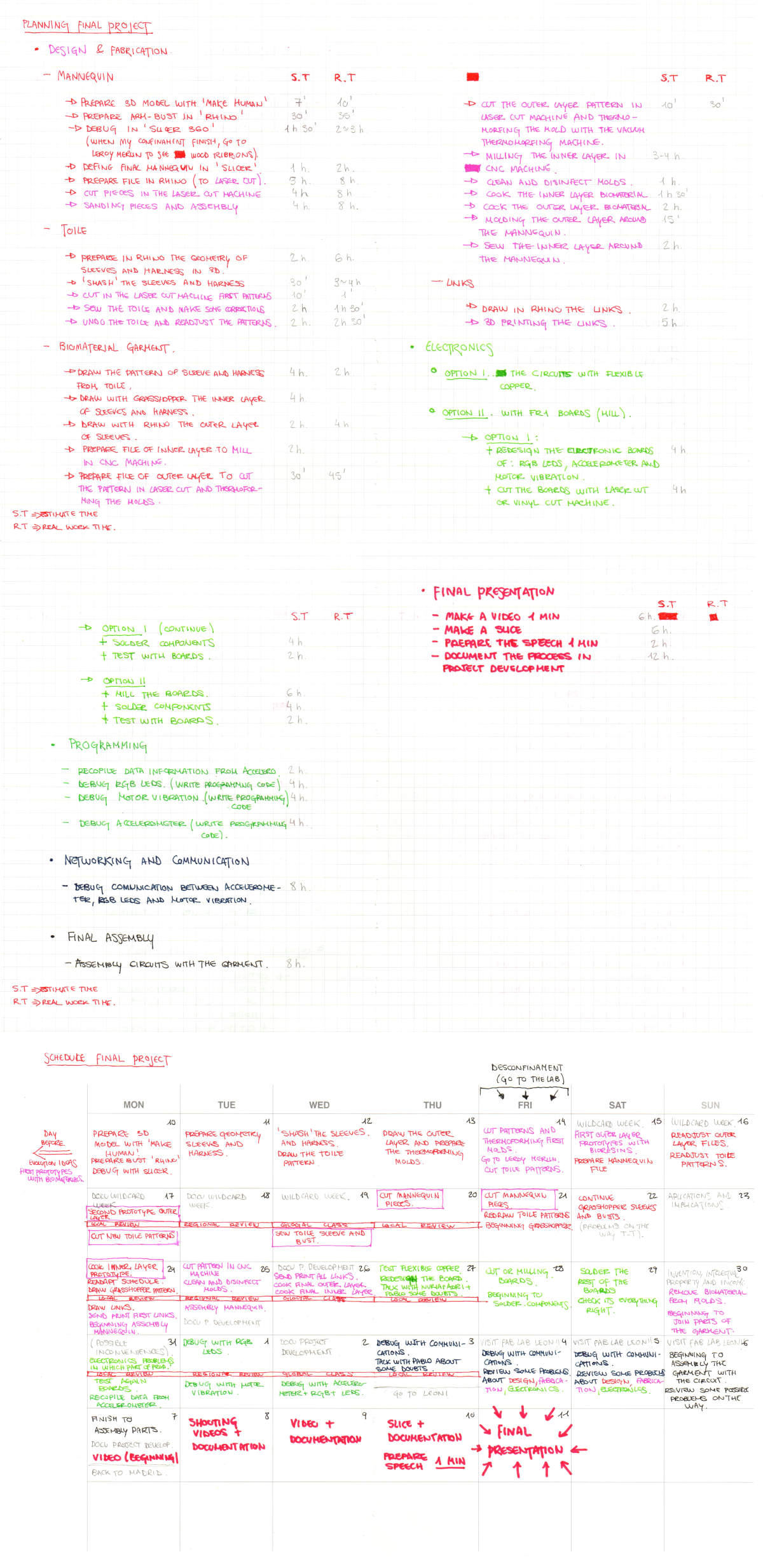
What parts and systems will be made?
For the project we are going to develop:
- Auxiliary elements (a mannequin and reusable molds)
- The suit made with biomaterials
- Electronics design and production
What processes will be used?
For the mannequin modelling we will use Make Human, Rhinoceros and Slicer for Fusion 360 to get the sections of the body that I will cut at the lasser cut machine.
As for the sleeves and the harness, I will model around the 3D body extracted from Make Human to obtain the base patterns that I will draw with Rhinoceros and Grasshopper. Once we have them, first I will make a toile with cotton fabric cutiing in the laser cut to readjust some measurements on the body.
Once the patterns are readjusted, I will cut the pattern molds on the CNC machine for the inner sleeves, and do the external layer mold using the vacuum thermoforming machine and templates cut with the laser cut machine.
With the molds prepared, I will cook the biomaterial with the ingredients of the different layers of the suit being:
- The inner layer, a flexible biolilm made with a gelatin base and raisins.
- The outer layer, a semi-rigid biofilm made with a soap and gelatin base.
For the design of the electronic boards I will use Eagle, I will cut the circuits with the vinyl cutter and the laser cut machine and later we will solder all the components.
About the programming of the microcontrollers we will use Arduino IDE and Windows.
SUMMARY
- Computer Aided Design. (Design of auxiliary elements, patterns , links and molds).
- Laser Cutter. (Cutting templates and auxiliary elements)
- CNC Machine. (Inner Layer Suit Molds)
- Vacuum Thermoforming Machine (Outer Layer Suit molds)
- 3D Printing. (Joints and links)
- Molding and Casting. (Sleeves (inner and outer layers) and harness)
- Electronics Design > Electronics Production > Input and Output Devices > Networking and Communications. (Accelerometer, RGB Leds and Motor Vibration)
What questions need to be answered?
I want to explore the feasibility of implementing flexible components and technology in experimental textiles (biomaterials) around the body. For that, I ask myself the following questions:
> What kind of biomaterial do I need to use so there is no conductivity between the circuits and the skin?
I need to use ingredients that help isolate all the electronics from the body. For this reason, I am going to use gelatin and glycerin as a base, which gives me flexibility and elasticity. From here I am going to add several properties with: fruit fibers (grapes and dried figs) to reinforce the internal structure of the mixture, and Mica powders as an insulating element, which thanks to its chemical composition has mechanical, electrical and heat resistance.
> How can we pack all the circuits so that they are not visible around the body?
Initially, I am going to try to pack the circuits through biofilm sublayers which I will try to biojoin with the same leftover residual biomaterial. In case it does not work, we will try to sew them by hand or with a sewing machine.
> Will user mobility between electronic components, design and possible external wiring be feasible?
This is one of the issues that most concerns me and is one of the main objectives to try to achieve. Make the suit as comfortable and ergonomic as possible between the biomaterial and the technology implemented. Try to make the suit as autonomous as possible in this regard.
How will it be evaluated?
(20/05/2021 10:39 a.m.). As Pablo explained us well during our Local Review, it is important to evaluate what will be the realistic and functional objectives and criteria of our project. So, I am going to mark which are the steps or spirals for the development of the project:
- First step. Get to create a garment made with biomaterials from digital tools.
- Second step. Manage to register a range of values with the accelerometer when I make certain movements.
- Third step. Program and communicate the different ranges of values from the accelerometer (according to the position of the arm) to the RGB LEDs, which will tell us if we have done correctly the movement when they change color.
- Fourth step. When I finish doing the exercise sequence, the suit will determine that I have finished the exercise when the vibration motor begins to vibrate.

